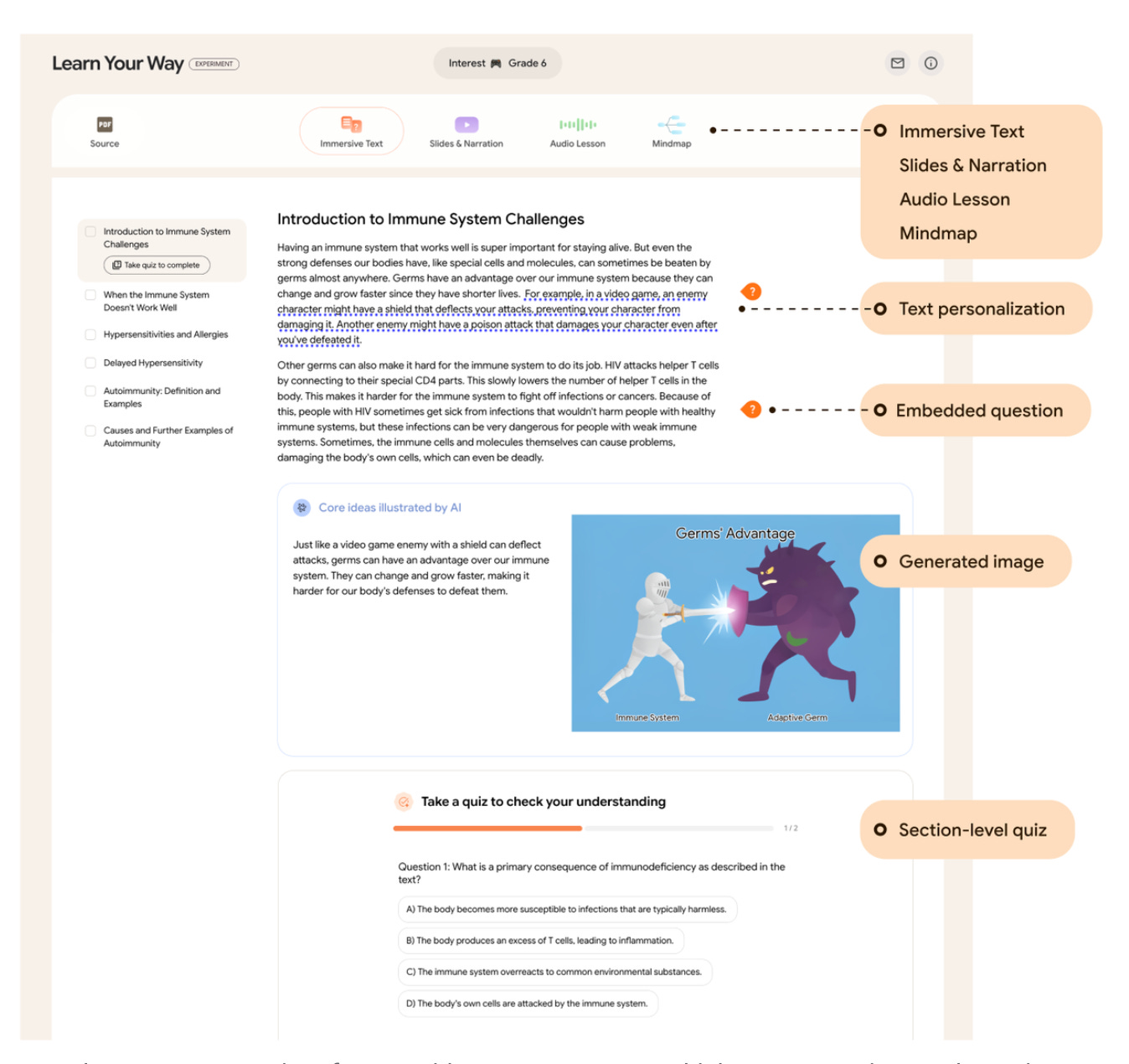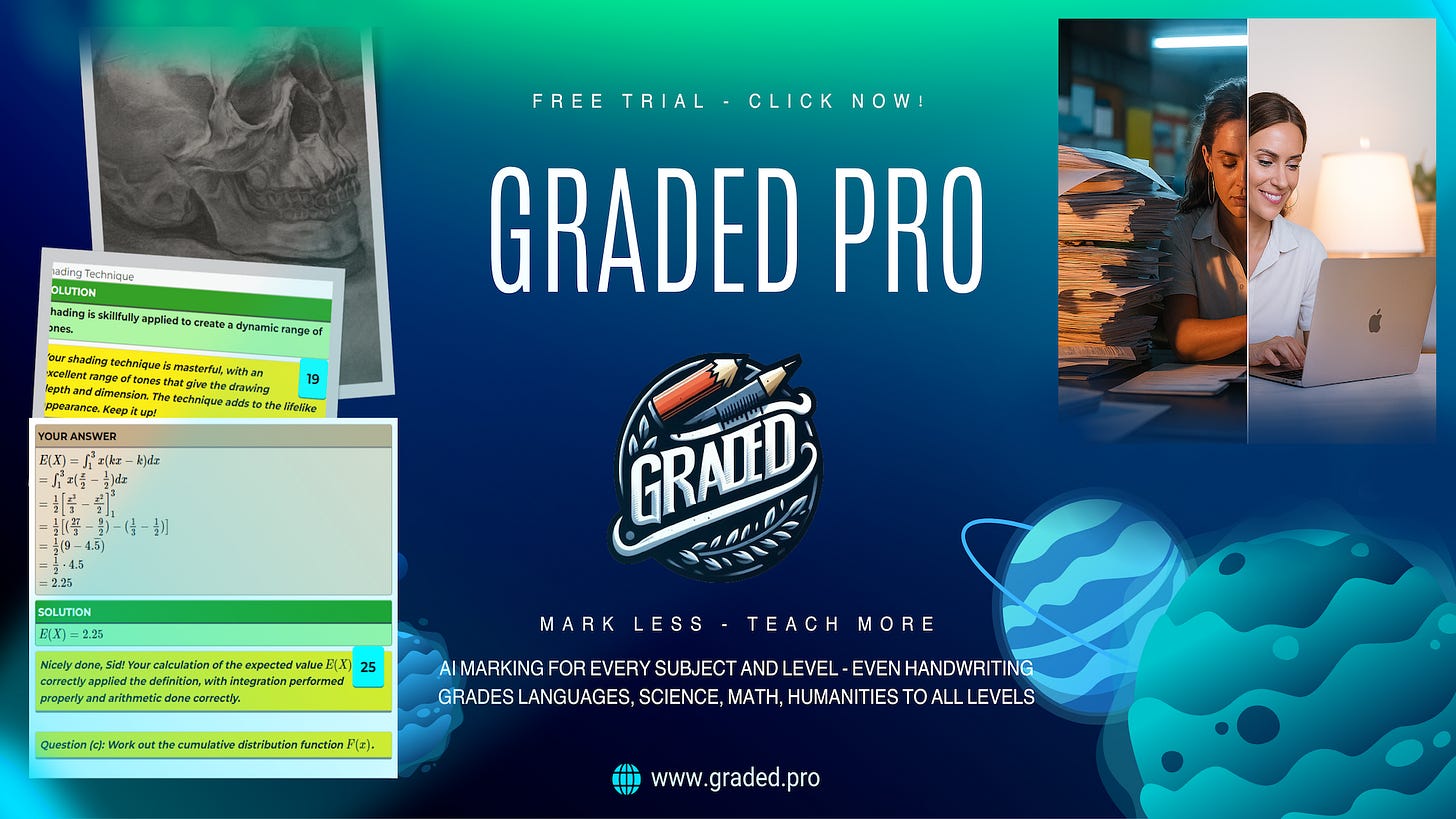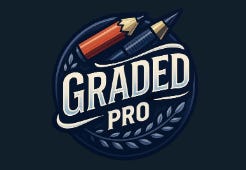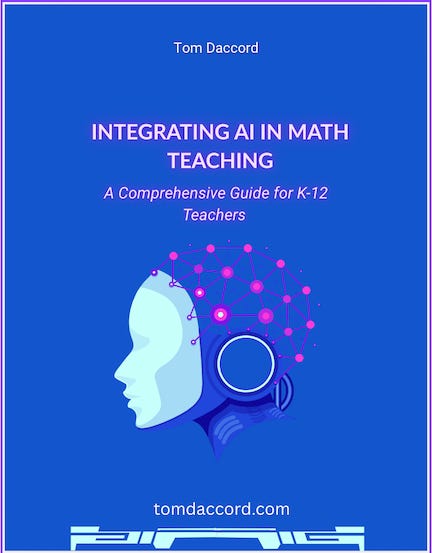For years, I've written about the fundamental mismatch between the static, one-size-fits-all textbook and the dynamic, diverse needs of our students. The edtech community has tried to solve this problem with an ever-growing collection of digital and multimodal resources. A decade ago, I was championing Inkling, a publisher offering interactive digital textbooks with a variety of kinesthetic and interactive innovations: 3D simulations, interactive maps and photos, embedded videos, audio commentaries, music, formative quizzes, and the ability to share notes and bookmarks.
Yet today, bolstered by AI, we can move beyond putting new features onto a fundamentally old chassis. We can now personalize textbook material in a way that responds to student needs and initiatives and develop a truly AI-conversationalist textbook. Google is now halfway there, with its release of "Learn Your Way," a new project with an old vision of breaking free of the static textbook model.
After reading the official announcements, the research paper, and probing some examples, it’s clear that Learn Your Way is something more than just another AI study tool. In many ways, it’s a thoughtfully designed prototype for what textbook materials could become. And, while not fully there, it’s also a move towards transforming the textbook from a monologue into a dialogue, a shift worth championing.
What Exactly Is "Learn Your Way"?
"Learn Your Way" is a Google experiment that reimagines digital textbooks as deeply interactive and personalized experiences. Drawing from Google’s research, it builds the learning experience around an AI embedded directly within the content.
Learn Your Way starts with a student selecting a grade level and a personal interest. Using this input, the platform adapts the material to align with the student’s academic level while weaving in elements connected to their interests. This aims to design the content to be appropriately challenging and personally engaging.
Google characterizes its system as “a two-step AI generation scheme” in which textbook content is first personalized and then transformed into various presentation forms and assessment components. AI is therefore used to generate different representations of the textbook material, including visualizations and audio-based formats, in 4 central features:
1. Immersive Text
Immersive Text transforms traditional textbook passages into interactive, adaptable content. It encourages active reading rather than passive scanning and helps learners engage with material at their own level.
2. Slides & Narration
This feature converts textbook content into visual slide decks with narrated explanations. It is designed for auditory and visual learners alike, and mimics how teachers often present material in class.
3. Audio Lesson
Audio Lessons allow learners to listen to content as if it were a podcast or lecture. It helps reinforce retention by engaging different cognitive pathways
Note: In its tech report, Google describes an “audio-graphic” feature that simulates a conversation between a teacher and a student, and teacher and student turns are generated iteratively using independent Gemini “personas.” However, I could not find this audio “personas” feature in action.
4. Mindmap
Mindmaps generate structured diagrams that show the relationships between concepts and Learn Your Way organizes knowledge hierarchically, helping students connect details to bigger ideas. (Those familiar with NotebookLM mindmaps will understand its use immediately.)
In all, the underlying pedagogical current behind these features is that learning can be more effective when the experience is adapted to the characteristics and needs of the learner. Therefore, Learn Your Way is designed to regenerate the original textbook content, based on specific learner attributes.
At the moment, there is a waitlist for accessing the fully personalized version of Learn Your Way. Yet, Google has made several examples available. Here are a few:
Note: These have predetermined academic levels and interests, so you won’t experience the same personalization as the full version.
A Google study involving 60 students from the Chicago area (ages 15–18) found that Learn Your Way users scored, on average, 9% higher than non-users on the immediate assessment following the study session and 11% higher on a retention assessment 3-5 days later. Finally, Google reports that 100% of students who used Learn Your Way reported that they felt the tool made them more comfortable taking the assessments.
Pedagogical Pillars and Special Features
The platform is built on a few key pillars:
Personalized Learning Paths: To align with learner interests, the system re-generates textbook content to match a learner’s grade level and personal interests (e.g., food, music, soccer) and then produces various multimodal representations of the content. As such, it’s a step towards tailoring the entire learning experience to a student’s own needs and preferences.
Interactive Reinforcement: The platform also moves beyond static text by embedding interactive elements, such as practice problems and quizzes. These are contextually generated based on the material; in other words, they aling with the students academic level.
In partnership with Graded Pro
Graded Pro is a robust platform that has evolved from a smart Google Classroom add-on into a full-service AI grading ecosystem now used by over 1,000 schools worldwide.
Graded Pro effortlessly handles essays and extended writing, mathematical proofs, science reports, art portfolios, and even messy pen-and-paper work and sketchbook pages. COPPA, FERPA compliant.
With Graded Pro, teachers can grade work up to 95% faster, freeing hours each week for student coaching and individual support.
Global curriculum frameworks come pre-loaded with U.S. Common Core, AP, IB, UK GCSE, and A-Level. Custom rubrics are just a copy‑and‑paste away.
In all, Learn Your Way strives to transform static, one-size-fits-all textbooks into dynamic, student-centered ecosystems by leveraging adaptive content, and interactive practice. These combined factors help lead to deeper personalization, sustained engagement, and stronger learning outcomes.
The Shift from Content Delivery to Cognitive Coaching
While the technology is impressive, what catches my attention is the pedagogical shifts this model helps facilitate. Learn Your Way goes well beyond simply making a textbook more engaging.
The model reframes learning from content consumption to skill development. While the traditional textbook is basically a delivery mechanism for information, "Learn Your Way" is a system for building inquiry skills. As Maginative points out, Learn Your Way transforms textbook content into an “interactive, personalized lesson,” but the real revelation is that the student drives that interaction. The system reacts to the student’s needs and wishes and thus empowers them to personalize their learning journey.
There’s a great opportunity here to foster metacognition at scale — if Google is willing to make the jump. Never has a student been able to ask a textbook, "Can you explain this concept slowly, step by step?" If Learn Your Way incorporates Google Gemini in this manner, it’s a step toward students identifying gaps in their knowledge and actively choosing a strategy to bridge it. A printed textbook can never provide a metacognitive conversation. Learn Your Way could faciltate a continuous feedback environment — where students are not only learning the material but are also recognizing how they learn — if it evolves into a fully functional AI chatbot.
The Road Ahead: The Architect in the Classroom
As I’ve hinted, Learn Your Way is not without its limitations and challenges.
While a step in the right direction, it falls short of being a conversational partner. For some reason, the AI is not designed to be an ever-present Socratic guide — like Khanmigo. (Perhaps it’s coming, but I saw nothing in the Google materials.) It would be ideal if, as students read about a complex topic, they are able to highlight a passage and ask the AI to “explain this in a simpler way,” “give me a real-world analogy,” or “tell me why this is important.” This would help transform the passive act of reading into an active process of inquiry. But, as it stands, Learn Your Way is not directly a “chatbot tutor” with an interactive dialogue.
The prototype was tested in a controlled environment, so how will it scale to the beautiful chaos of a K-12 classroom? How do we ensure equity of access so these tools don't widen the digital divide? What about hallucinations? And, most importantly, how do we teach students to critically evaluate the AI's guidance rather than passively accepting it as infallible? A lot of preparation is required.
And how will teachers feel about it? "Learn Your Way" is not meant to diminish the role of the educator and, instead, elevate it. But I saw no indication that Learn Your Way offers insights into how students interact with the content, such as what they ask, where they struggle, and how they progress. There is no mention of a dashboard. As the AI takes on the role of personalizing content, is the teacher truly the manager of the student learning environment? Yes, the teacher is the facilitator of collaborative projects, and the coach for the inquiry skills these tools demand. But will teachers feel in control if they are not controlling their course textbook?
Conclusion
Learn Your way starts with a fixed textbook source and then transforms it, so there is limited latitude for new problem types and creative activities. The system will not “invent” new paths or approaches beyond what is in/on the edge of the textbook. So, teachers will continue to play a central role in designing the compelling questions, activities, and collaborative exercises that launch students into dialogue with a topic. Clearly, Learn Your Way doesn't replace the teacher. But it does reframe the textbook, and it might become an AI-Conversationalist and teacher-assistant that brings actual value. I am excited to see where this road takes us.
My new, free 90-page guidebook is now available for download at tomdaccord.com .
Do you have any suggestions to improve this newsletter? Please message me or leave a comment below!







Thanks for sharing!!